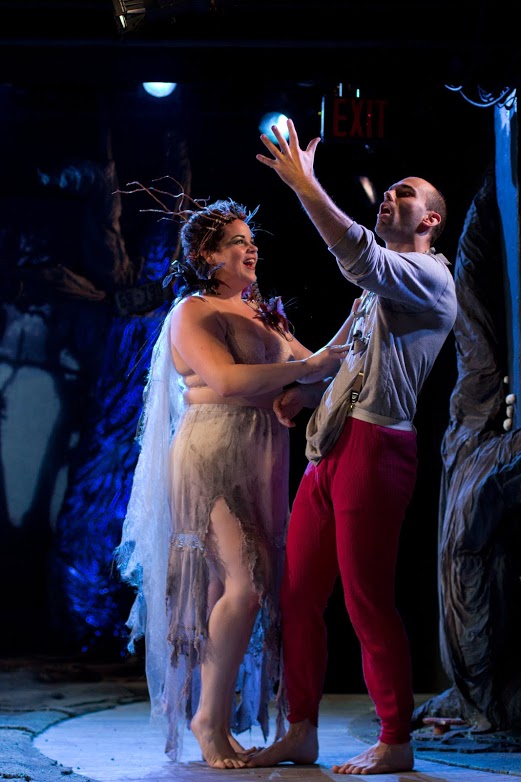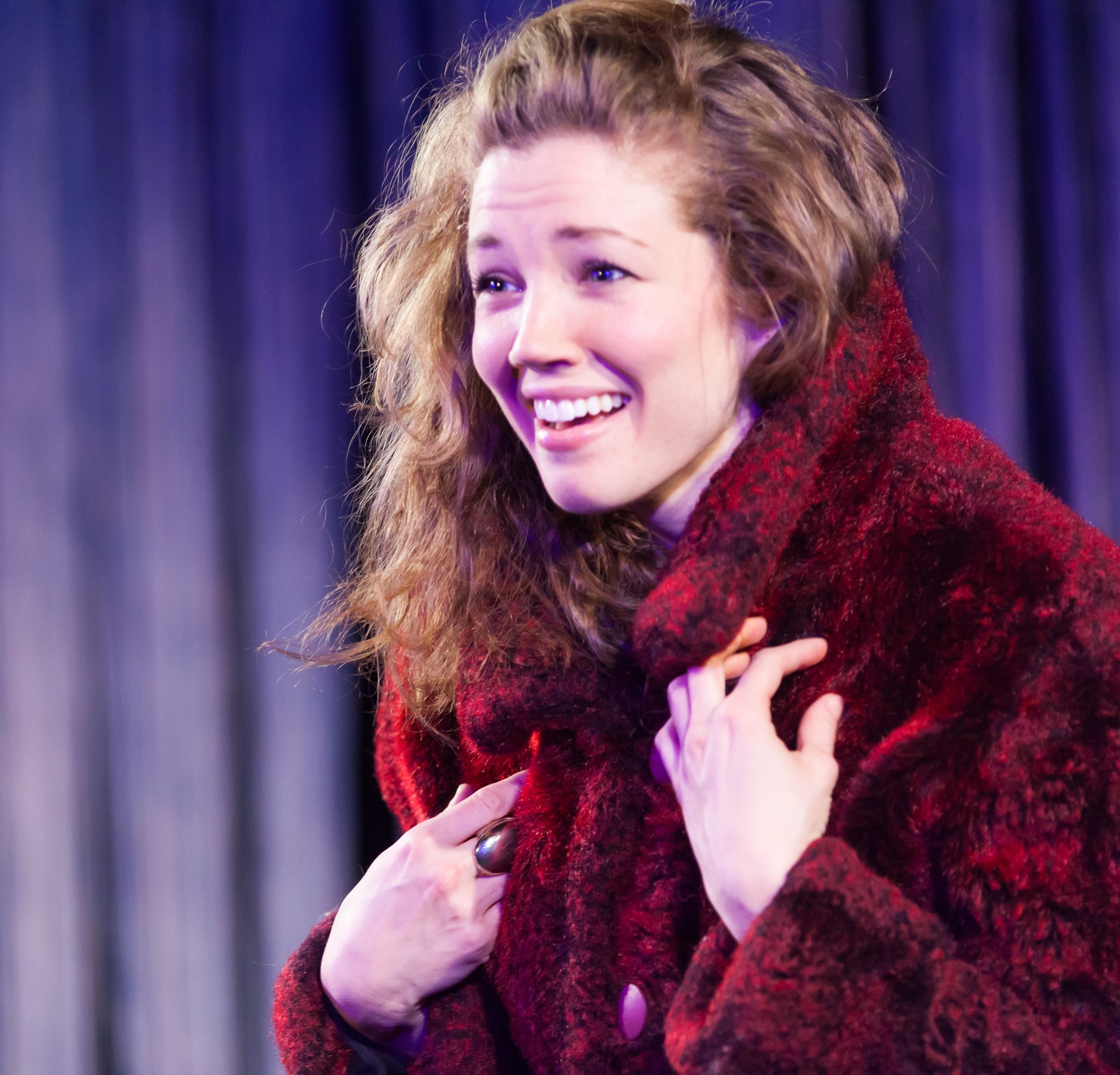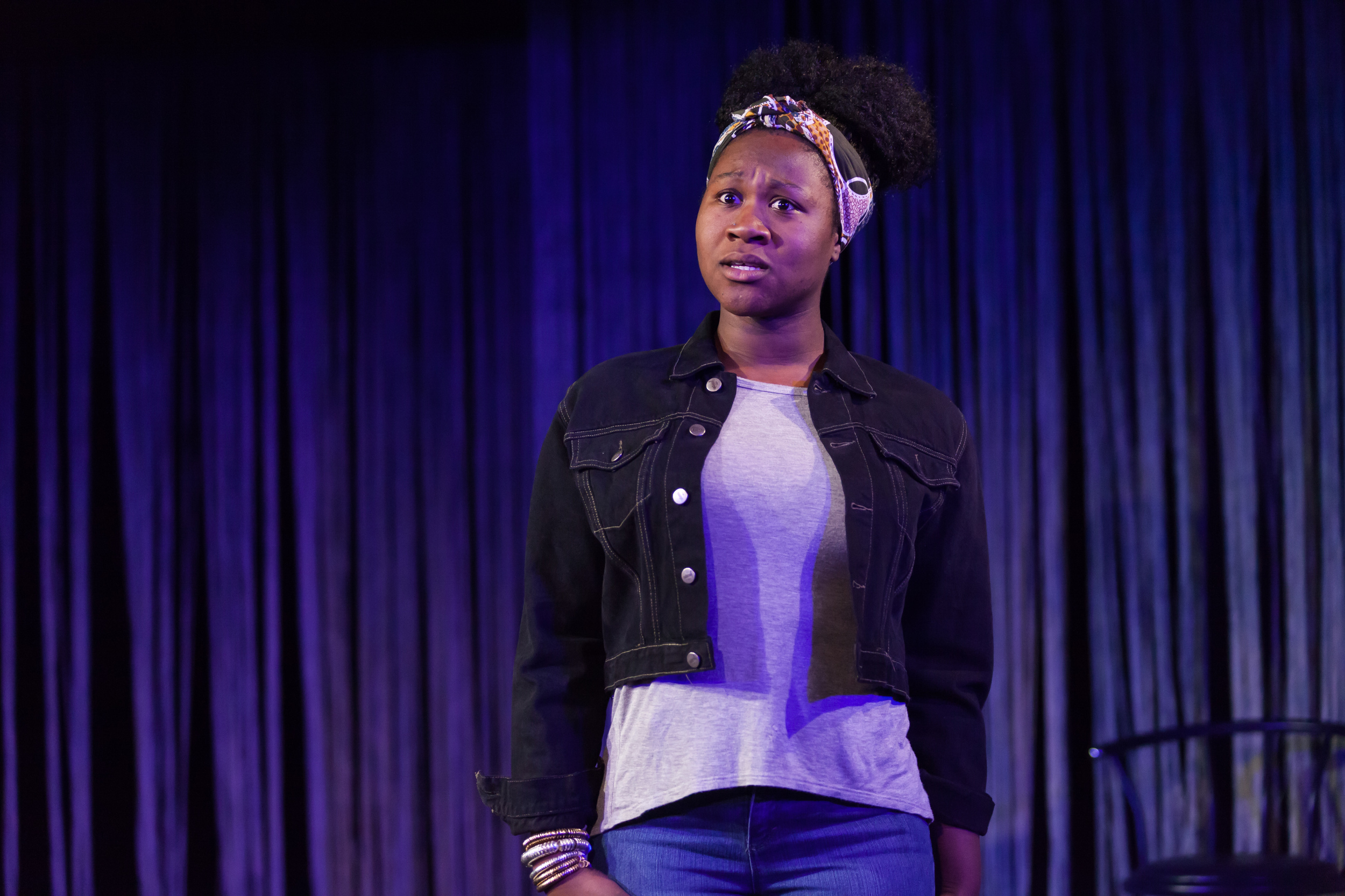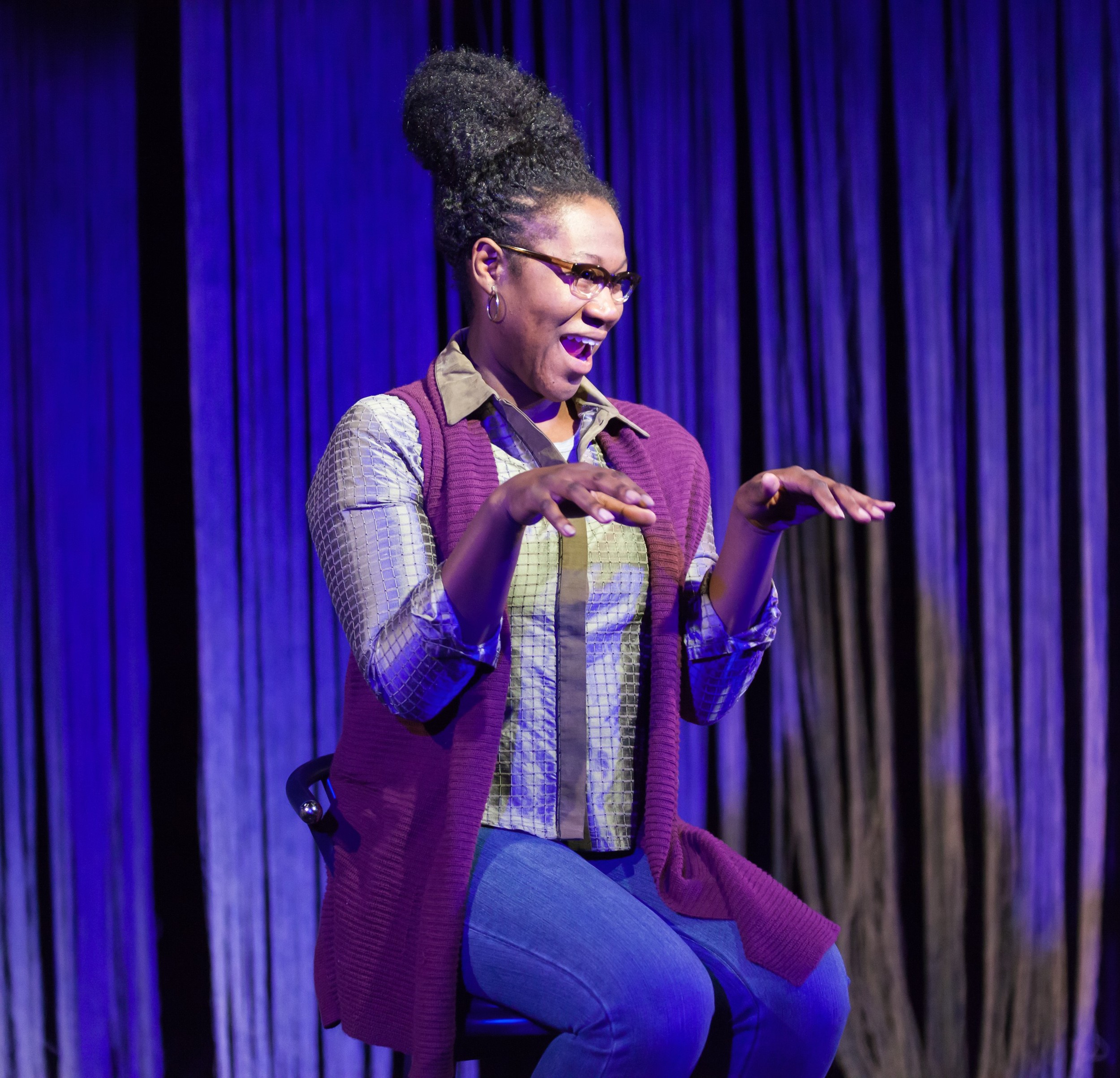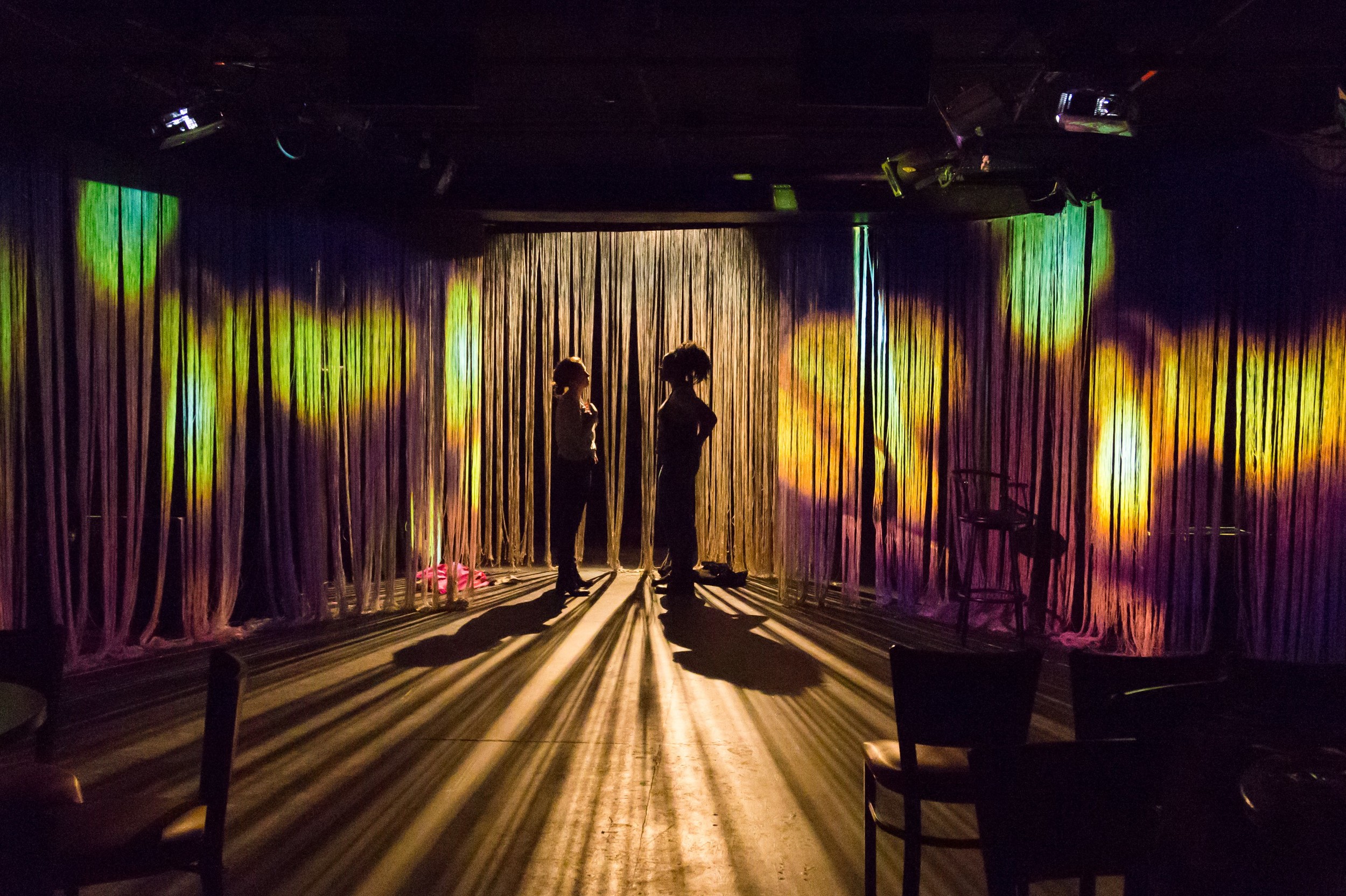Review of Mrs. Galveston, Yale Cabaret
The final play of the first half of Yale Cabaret’s 49th season is an entertaining look at the at- times fraught world of elder care. Mrs. Galveston, by third-year Yale School of Drama playwright Sarah B. Mantell, enjoys some easy laughs at misunderstandings between an old woman and the young people assigned to impose some kind of regimen on her stubborn existence, then develops more interesting narrative devices. These include a big white pop-up book that Mrs. Galveston treats like a precious heirloom and an array of Post-It Notes that a young man’s grandmother berates him with.
An interesting conflict in the play comes from a somewhat surprising correspondence. Jim (George Hampe) visits the elderly Mrs. Galveston (Sydney Lemmon) because a Mr. Sanford has requested she be looked after (though she doesn’t welcome the intrusion), while, at home, Jim is not doing such a good job of taking care of his grandmother, though also refusing any care-givers from the organization both he and his cousin Liz (Aneesha Kudtarkar) work for. The highest-rated caregiver is Mark (Edmund Donovan), but neither Mrs. Galveston nor Jim have any interest in accepting his services. The frustrations Mark faces are expressed comically, and that helps to keep things light. And the irony of Jim’s situation—he’s failing with his own grandmother but succeeding with Mrs. Galveston—opens up the implied theme that, sometimes, families do need professionals, that the familiarity of blood ties can cause more tensions than they ease. While Mrs. Galveston is never quite comfortable with having a stranger in the house, she eventually is pacified by Jim’s ability to concoct a story that goes with the pop-up images in her big white book.
Mrs. Galveston (Sydney Lemmon), Jim (George Hampe) (photo: Elizabeth Green)
The book, and the scenic design by Claire Marie DeLiso, add elements of charm and visual cohesion to the story. The living room Mrs. Galveston resides in is situated in a charming little house that echoes the paper house in her book. A step down and across a connecting space of paneled floor sits the table festooned with Post-Its where Jim attempts to meet his grandmother’s demands. Both spaces are united with framing posts that situate the action within a homey interior that expands to join both houses.
Mrs. Galveston (Sydney Lemmon), Mark (Edmund Donovan)
The play, directed by dramaturg Rachel Carpman, is particularly nimble in its transitions and in dialogues that find characters mostly having to feel their way. Mantell’s script registers the caregiver’s ups and downs and confusions, the good intentions that go awry, and, in its sweetly realized conclusion, the comfort of the familiar. Along the way, there are the tensions of dealing with elders as though they were children, of trying to anticipate concerns, of trying to make time in one’s prime of life for a life past its prime, and, in a speech Liz directs at Jim, the fact that, in most families, the care of parents is left to female family members. Mrs. Galveston provides a touching corrective to that perception when we finally meet the mysterious Mr. Sanford (Edmund Donovan).
The neat doubling of the situations means there’s potential for confusion about who Jim really cares for. Playing the role with a kind of nervous distraction, Hampe’s Jim wants all to go well but seems to wish he could be doing something else. Donovan’s Mark is a bit unctuous and we don’t really fault Mrs. Galveston for preferring Jim. Kudtarkar’s Liz seems mostly at a loss—her scene with Mrs. Galveston is the funniest of the attempts to fathom the big white book because the least patient. And, as the chair-hugging Mrs. Galveston, Lemmon plays the title role as a mistress of her detachment, a woman defiantly herself and with a child’s sense of entitlement in deciding what works and what doesn’t.
As a family dramedy, Mrs. Galveston seems well positioned in the season as a reminder of the bonds of home and the allegiance owed the elderly as the holiday visits begin.
Mrs. Galveston
By Sarah B. Mantell
Directed by Rachel Carpman
Co-Dramaturg: Davina Moss; Co-Dramaturg: Molly Fitzmaurice; Set Designer: Claire Marie DeLiso; Costume Designer: An-Lin Dauber; Lighting Designer: Samuel Chan Kwan Chi; Sound Designer: Ian Scot; Technical Director: Harry Beauregard; Production Manager: Scott Keith; Stage Manager: Rebekah Heusel; Calling Stage Manager: Paula Clarkson; Co-Producer: Jaime Totti; Co-Producer: Adam J. Frank
Cast: Edmund Donovan; George Hampe; Aneesha Kudtarkar; Sydney Lemmon
Yale Cabaret
December 8-10, 2016




